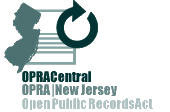A Short History of Willingboro
In 1688, the constabulary of Wellingborough was incorporated under English Colonial law, making it one of the original townships of Burlington County. Wellingborough extended West to the Delaware River. It included present day Beverly, Edgewater Park, Delanco townships, and Rancocas Village.
Wellingborough was sparsely populated throughout the early 18th century, although various Friends meeting houses and schools were built.. The most prominent part-time inhabitant of Wellingborough during this era was Sir William Franklin. He was the son of Benjamin Franklin, and the last Royal British Governor of New Jersey. He built a summer mansion and deer park in Wellingborough.
In 1798, the township received a new charter from the state of New Jersey and was incorporated as Wellingborough Township. During the 19th century, the township maintained a stable population, as shown by the yearly voting records that listed less than 100 voters.
Post-World War II development would change Wellingborough forever. Soldiers returning from the war created a demand for new housing at affordable prices. This demand coupled with changing industrial growth patterns led to the growth of the suburbs.' William Levitt was one of the leading developers of new homes in this era. In Long Island, New York his company bought adjoining tracts of land. The land was spread over a number of towns and villages. On this land he built his first Levittown. He repeated his success in Pennsylvania with the development of another Levittown. Again he bought adjoining tracts of land spread among a number of towns. Levitt faced a number of hurdles in each development, most notably differing zoning and development regulations among the towns. Levitt determined that future projects would need to be built in one town. In 1954 the agents of Levitt optioned, and then bought much of the land in Wellingborough. By 1956, Levitt had acquired 90 percent of the township. The boundaries of the township were re-drawn 1956 by an Act of the New Jersey State legislature. The boundaries are from the Westhampton Township line on the east to Route 130 on the west, and from the Burlington Township line on the north to the Rancocas Creek on the south. This act annexed the village of Rancocas to the Township of Westhampton.
In 1959, the population or Wellingborough was approximately 10,000 people. That year a referendum vote was held. The residents, by a margin of 80 votes, changed the name of the township to Levittown. However, in 1963 a referendum changed the name to Willingboro. In 1960, after much study the residents voted to change the form of Willingboro's government from a Township Committee to a Council -- Manager form.
Willingboro Township has proved to be a community of caring citizens of diverse racial, cultural and ethnic backgrounds, actively involved in working toward the betterment of the town.


